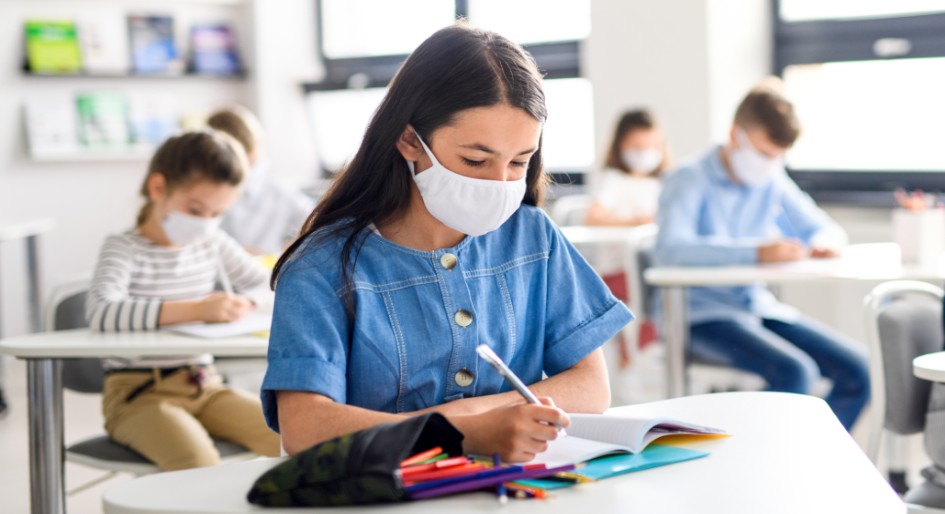As classes resume in person, schools are planning and considering all possible pandemic risk mitigation options to support and safeguard students and staff.
One protocol being discussed in Ontario is the deployment of surveillance technology testing for automated COVID-19 tracking purposes, similar to mitigation measures used in other facilities like airports and dental offices.
Naturally, the ideal time to evaluate surveillance solutions is when the school is closed, off-hours and not full of students. This is when it’s easiest to test, run cable, place cameras and audio systems and make changes to the servers.
Testing to real-life scenarios
There can be unforeseen scenarios in school settings that aren’t found in a lab. Real-world testing and evaluation is important before recommending a product or solution as it gives boards and facility managers a chance to correct and optimize the product and solution early on. While processes vary among manufacturers, testing is the best approach to ensure any issues are identified and addressed prior to the entire surveillance system being set up for good.
How do you know if surveillance testing was successful? First, determine what are the board’s and the school’s metrics for success and try to be realistic as there’s no such thing as perfection. Have some goals in mind. Is the goal for 100 per cent of people to be socially distant all the time? That’s obviously not realistic and will likely fail.
Make your goals as real-life as possible and consider complexity and best practices. Some viable tracking options that surveillance could help with include:
Hygiene and sanitation
Consider the washrooms and how often they need to be cleaned. Schools can mount cameras with people counting solutions, outside of the washrooms, to trigger messages to cleaning staff. Data can then be gathered on usage and sanitation requirements and tied into a cleaning schedule. A speaker near the washroom doors can play an audible message saying, “Only three people allowed in the washroom; please wait your turn in the hall.” In the future, these intelligent speakers can be used to play music or relay other important messages to students.
Traffic or occupancy hot spots in a corridor or hallway
Something like an occupancy estimator can gather percentage metrics to accurately estimate the number of students in the halls or those moving into locations where they shouldn’t.
Understand student hall occupancy patterns for physical distancing with triggered event notifications sent to the principal or a strobe light and audio message that alerts when too many students gather in one area. This valuable video data capturing can help analyze overall occupancy for physical distancing measures, understand room trends and enhance utilization of the space, while providing the ideal environment to keep students safe.
No-touch or low-touch entry with notification system
Door stations notify school staff when families are at the main entry to pick up their children and allow for two-way communication, in addition to contactless remote entry based on a QR code, facial recognition or wave sensors. Something like this can help eliminate or significantly minimize high-touch door handles.
Aggressive behaviours in check
As students learn to accept the new normal at school, there is potential for aggressive behaviour, which can escalate when patience and physical distancing are required. Many safety and security incidents are preceded or initiated with sound. With a camera and advanced analytic software, one can listen for predefined noises and receive alerts for aggressive behaviours. Such a system provides algorithms that can detect an acoustical pattern and pick up on aggressive voices or sounds, then notifies the operator who can evaluate the situation by watching live video feeds and take necessary measures.
Collaborating to protect student and staff privacy
One of the biggest oversights is disregarding the combination of privacy and surveillance, especially when it comes to cybersecurity. With an increased reliance on the network, connected devices or surveillance systems must be hardened to make them more secure. It’s also essential to train and educate staff accordingly on implemented security policies.
Many people need to be involved in the surveillance testing of schools for various reasons. End users like the IT department, teachers, the board, unions and facility management are all stakeholders who can play a role in implementing and getting the testing done according to end goals. Many schools will also work with consultants or surveillance integrators to assist in the design, testing, deployment, the optimization of the system, the commissioning of it and the cyber security portion.
A school’s network is only as secure as the weakest link. With an Internet Protocol (IP) end point, such as an IP surveillance camera, speaker/audio system, radar or access control unit and an unsecured network, the school is susceptible to cyberattacks. For example, consider if someone were to compromise a password to the device that may also be a common password for other devices on the network, such as servers.
Cyber attacks have spiked because of an increased reliance on being connected online. Easier targets are buildings with poor implementations of cyber policies, where hackers can gain access to their networks.
Protection involves all stakeholders at the table, including IT and suppliers, so that expectations are set, policies are implemented and adhered to, solutions are evaluated and tested, and platforms are updated as per manufacturers’ best practices.
Considering the long term after testing
What any school should consider after the testing phase is an open architecture, end-to-end surveillance solution of both hardware and software components. It’s recommended to avoid anything closed or locked down that will not be scalable for other measures beyond the current pandemic. The hardware would be the network cameras themselves and the speakers or potential sensors and switches. The software is the application running on board the Video Management System (VMS) that provides the analytics. You need all of these to have an efficient surveillance system that can be used today and expanded upon tomorrow for future goals or crisis situations.
If you already have a surveillance system of some kind, schools can ask integrators or manufacturers for a case management of how they can use what they have or augment it for today’s environment. Most schools already have stand-alone systems. Aside from augmenting a stand-alone system, school boards could consider linking every school system to gather collective data; for example, monitoring how many students in all their schools are wearing masks or using the hand sanitizing stations.
Schools should consider working closely with the manufacturers, as they know the technology and how it can be used better than anyone. Gathering all stakeholders and ecosystem partners can truly build the best solution for the schools to obtain maximum benefit.

Gavin Daly manages the Professional Service Group (PSG) at Axis Communications, Inc., providing technical expertise and personalized advice for both internal and external customers. Gavin’s industry insight and experience provides value and practical expertise to ensure customers achieve full realization of their surveillance needs.




